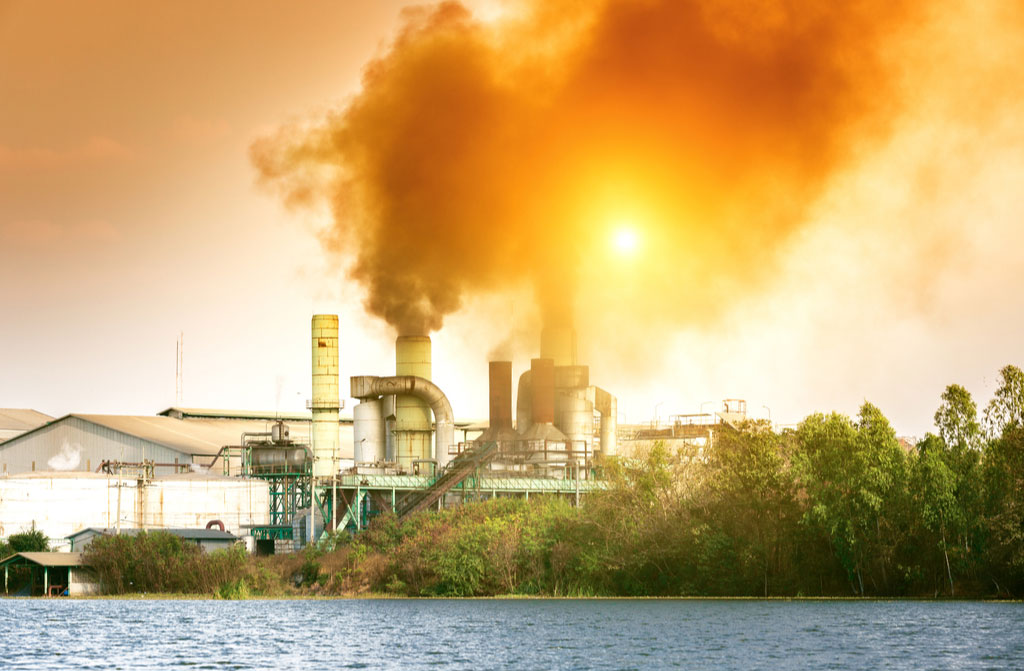Well, I bet that title got your attention. But isn’t that what titles are supposed to do? This subject has been overlooked and swept under the rug and disregarded ever since it was discovered. I, for one, like a bit of activism in my work, so shedding some light on things that impact the lives of everyone is right up my alley. I suggest you buckle up and hold onto something.
Article Summary:
- The 21st Century Lifestyle
- The “Forever Chemicals”
- What is PFAS?
- Health Risks Associated with PFAS
- Actions Taken Against PFAS Contamination
The 21st Century Lifestyle

Living in the 21st century might have many people complaining. Whether it’s not being able to buy the latest iPhone or the effects social media has on our lives, we are all facing problems that seem existential. The fact that they aren’t doesn’t change how we perceive them. But we’re all looking in the wrong direction because those aren’t real problems.
With COP26 so close behind us, we are already looking elsewhere for things to occupy our minds. In the age of Twitter, Facebook, Instagram, and TikTok, our attention span has become more and more limited. Vines promoted 6 seconds videos, and ADHD diagnosticating started to increase. But we have everything at our disposal, so why does it matter?
It matters because all these distractions are doing an excellent job of distracting us. Ever heard of the saying “Can’t see the forest for the trees”? That’s precisely what I’m talking about. Just zoom out from your general proximity and the problems your close friends and family are dealing with. Zoom away from your city, state, and even country and look at the much bigger picture. While we designed a lifestyle focused on our comfort, we barely spare a thought for anything else, and everything else is suffering.
When we talk about what is happening to our environment, we are searching for causes. We make lists and diagrams about the biggest industrial polluters. We look at fossil fuels and deforestation as causes, but all we have to do is look at ourselves.
Now, without getting too gloomy, we can look at our lives and try to see ways to impact change. Whether it’s by buying an electric car or minimizing the amount of waste we generate, we need to reduce our carbon footprint as much as possible. Something else that we can do is shed light on how our lifestyle harms the environment. We can fix many things and decrease pollutants, but if the general public is unaware of them, they won’t be able to take action. This is why, in this article, we will be focusing on something that was man-made and is incredibly harmful to everything around us.
The “Forever Chemicals”

Everyday products contain a wide variety of chemicals that may be harmless or harmful to us or the environment. The reason for which these chemicals are used is to increase the durability of some products, make them easier to use, and increase our comfort. We can see this in the excessive use of plastic, nylon, acrylic, polyester, and other synthetic fibers, for example. But we aren’t here to talk about plastic; although it is one of the biggest polluters, we can replace it in our wardrobe by adding an eco-friendly flair to it. While plastic has a long life and takes a long time to disintegrate, it does eventually disintegrate.
The “forever chemicals” that we’ll focus on are PFAS or variants from PFOS and PFOA. They are made with highly toxic fluorinated chemicals. Once these chemicals enter our bodies, they build up and never break down. Unlike plastic which can also be recycled and does not win the nickname “forever chemical”, these chemicals can not be destroyed in any way. They are “forever chemicals”. Since researchers discovered their side effects, they were linked to various diseases. The most common are cancer, immune system, and reproductive harm, as well as other diseases. In the meantime, companies have been using them for decades while covering up the health risks directly linked to these chemicals.
Now we’re getting to the worst details related to these chemicals. Today, the amount of contamination with PFAS is global. Most Americas, newborns included, have PFAS in their bloodstream. Furthermore, as high as 200 million people are exposed to contaminated air in their households and might consume water tainted with PFAS. It’s surprising to hear that something that is now a national crisis was considered the “miracle of modern chemistry” when it was created. Even those who are living off the grid can not be safe from the level of contamination resulting from corporate greed.
What is PFAS?

PFAS is the short version for per and poly-fluoroalkyl substances, a class of over 9,000 chemicals discovered sometime in 1946. At the time, the manufacturer DuPont introduced their latest products. Their nonstick cookware is coated with Teflon. Since then, derivates from Teflon gave way to the fluorinated chemicals family. Products that have nonstick, stain-repellent, or waterproof abilities contain these PFAS. This is why looking into kitchen essential trends might be a good idea. But how is something that makes a pan’s surface nonstick affecting my health? Some might say that they provide sustainable characteristics to these products. Others might think they increase their life-cycle. Well … they would be wrong. So what is PFAS?
The appeal provided by these chemicals increased their commercial application. The result is that many consumer products contain these PFAS. Now, due to the overuse of chemicals over decades, our soil, water, and blood of living things (human and animal) have been contaminated. This contamination covers the entire planet, and the general public is still unfamiliar with their impact. Some countries are fighting against pollution, and COP26 did cover aspects of PFAS contamination and regulation. So, you might find yourself googling “how to remove PFAS from water supplies”, but you’ll come out empty-handed. Sadly, we have to say this again. PFAS do not decompose. They are incredibly resistant, do not break down in the environment, and contaminate our bloodstream for years. There is no medical way of decontamination or other types of treatment.
PFAS Controversies

We already mentioned that DuPont invented these chemicals and patented them as Teflon. However, 3M was the main manufacturer of Teflon products. In 2001, chemical contamination was discovered in the drinking water from tens of thousands of households near a DuPont plant. This means that there was PFAS in water contamination. During a class-action lawsuit, they found that the DuPont plant knew about the hazardous effects PFAS had. They also knew that water contamination had occurred. Still, they decided not to tell the workers, the communities, or the environmental officials. The whole Parkersburg, WV scandal was documented in the 2018 movie “The Devil We Know”, and 2019’s “Dark Water” with activist and actor Mark Ruffalo.
The most shocking element of these controversies is that 3M had technical manuals dating back to 1963 where the PFAS were deemed toxic. They knew it was causing cancer in animals by the 1980s. They also knew that they had PFAS in water contaminating the drinking water supplies. 3M factories in Antwerp and Zwijndrecht, Belgium, and Gendorf, Germany, also faced scandals related to their production of PFAS and PFOS. The Zwijndrecht, Belgium, company faced legal proceedings and was ordered to stop producing these chemicals after they failed to prove the chemicals posed no threat to the environment. Aside from discovering the negative impact these chemicals have on our health and the environment, they also found that Belgium authorities and politicians have known of them since 2017.
Health Risks Associated with PFAS

We already specified the worst PFAS chemicals above. PFOA is used in pots and pans, giving them a nonstick surface, and is also known as the Teflon chemical. The second is PFOS, a chemical used by the manufactured 3M to produce Scotchgard. It is commonly known for its water and stain repellent properties used for fabrics. Studies began linking these chemicals to the following:
- Kidney, testicular, pancreatic, and liver cancer;
- Reproductive complications;
- Congenital disabilities;
- Low birth weight;
- Diminished childhood immunity;
- Endocrine disruption;
- Weight gain;
- Increased cholesterol levels.
Exposure to PFAS Chemicals

The first thing you should understand about these chemicals is that once they are released into the environment, they do not go away. The contamination levels resulting from manufacturers, industrial discharge, fracking, military, and consumer use are high. This results in the contamination of PFAS in water systems used by 200 million Americans. We are referring to studies done in Texas, New York, Michigan, California, West Virginia, Florida, and many other places. They found at least one part per trillion (PPT) or higher of PFAS in water. Levels higher than one PPT are considered hazardous for public health. At one point, 3M officials discussed in internal company messages that they should try to spin the analysis of these chemicals in a positive way. They were considering telling the general public that these compounds provided helpful health benefits. Still, that is not the main source of contamination for the general public, as disturbing as it might be.
Now, the initial PFAS chemicals used for pots and pans have been replaced. Still, brands produce nonstick cookware with the newer, more dangerous PFAS. Other applications for PFAS chemicals are paper and cardboard wrappers that come with your fast food or bakery products. Stain-resistant furniture and carpets are also treated with PFAS chemicals. Also, any article of clothing that is stain or water repellent might contain them. Lastly, there are even personal care products and cosmetics that contain these highly toxic chemicals. To get the scope of how far and wide this contamination affected the population, 3M researched their employees’ blood for PFAS. They discovered that not only employees working with these chemicals were contaminated, but those that had no contact with it as well. Expanding their research, they examined blood from 21 different blood banks in the US, finding PFAS again. They researched blood samples from the 90s, 80s, 70s, and 60s from places like Sweden or China only to discover PFAS again. The only blood samples where they couldn’t find PFAS were from 1948 to 1951, from military recruits during the Korean War. Now go back and see when these chemicals were first created.
Actions Taken Against PFAS Contamination

Lawsuits discovered the effects of these chemicals. Since then, the Environmental Protection Agency (EPA) and the Food and Drug Administration (FDA) have put pressure on manufacturers to stop using these chemicals. Manufacturers tested their employees’ blood and found they were contaminated. They took blood samples from another state that was considered clean to see the difference. To their surprise, they discovered there was no clean blood in their pool. Everyone that they tested was contaminated. They stopped using PFOA and PFOS (long-chain chemicals with eight carbon atoms). However, they replaced them with perfluorobutanesulfonic acid (PFBS). The latter are short-chain chemicals with six carbon atoms. Since lawsuits uncovered the effects of these chemicals, the (EPA) and (FDA) pressured manufacturers to stop their use.
Chemical companies use these replacement chemicals. They are considered less harmful and have a shorter lifespan. Still, DuPont notes that these replacements cause tumors in animals in their labs. In 2019, Auburn University discovered that these six-carbon atom chemicals have more hazardous effects than the eight-carbon atom ones. The world is fighting against them one by one, but the fight isn’t fair when dealing with something that we created but can not destroy.
Environmental Protection Agency

The EPA’s action plan against PFAS has been disappointing since they became aware of their impact on human health and the environment. Since 1998, the EPA has failed to take immediate action. This happened despite insurmountable proof of PFAS contamination and toxicity levels. No legal limit for PPT of PFAS in tap water was set. Their health advisory level suggests a limit of 70 PPT, which is 70 times higher than the limits indicated by independent studies.
In 2021 the EPA discovered over 120,000 sites across the US. These sites exposed people to these forever chemicals, increasing health problems in the areas. In October 2020, the Massachusetts Department of Environmental Protection established a maximum contamination level. The PPT was set to 20 PPT for six known PFAS referred to as PFAS6. In the meantime, the EPA is asking independent organizations to share their data. Like this, they’ll have the information necessary to place PFAS under stricter regulations. In January of 2021, during the final days of President Trump’s administration, the EPA pushed for the regulation of PFAS. Still, administration officials disregarded their research and established a limit of 1,100 to 3,700 PPT in drinking water. That number should be one based on the information covered above.
Food and Drug Administration

Similar to the EPA, the FDA failed to take action against these chemicals. During the research the FDA did, they discovered PFAS in popular foods, not only their packaging. When the results of this research leaked, agency officials said that the presence of these chemicals in food is “not a concern”.
The Pentagon
Like the other two entities, the Defense Department also failed in dealing with this crisis. A federal toxics agency issued a recommendation of a significantly lower PPT than the EPA’s. The Pentagon tried to bury the findings. Furthermore, they lobbied the White House into endorsing inadequate cleanup standards.
Congress

The House and Senate collaborated towards passing annual defense spending. They aimed to limit PFAS discharge and end military usage. The previous administration has made this process difficult. The House was only able to pass the PFAS Action Act of 2021 on July 21st. President Biden promised to address the PFAS forcefully through the Environmental Justice Plan. Also, the infrastructure bill was supposed to have that covered. In the meantime, EPA is working on plans addressing PFAS contamination. Still, real action is yet to be seen aside from private lawsuits against manufacturers or plants that use these chemicals.
Conclusion
For years public health and environmental advocates have been pushing for regulations and restrictions on these chemicals and sustainable environmental planning to take place. They are now holding on to the promise given by Biden’s administration. This includes plans from the EPA to regulate these chemicals. Paying attention to the details of these action plans is necessary and continuous push as well. Past administrations and EPA officials made promises for years. Still, action has yet to be taken. Talk to your local representative, promote government officials that push for climate action, and spread awareness. Discovering how to remove PFAS from the water will be a sad venture. Unfortunately, cleaning contaminated water isn’t accessible to the general public. Granular activated carbon filters and reverse osmosis technologies aren’t the most affordable.
While trying to fix the harm we have been doing to our environment by moving away from fossil fuels, we continue to discover new ways to damage our planet. Action is required and fast to regulate these chemicals. We need to limit and restrict any application due to the increased toxicity of these chemicals. After you check out the two movies mentioned above, similar to the movie “Erin Brockovich”, share them. Like & Share this article and make sure as many people as possible are aware of these harmful chemicals. Let us know what your thoughts are in the comments below.











